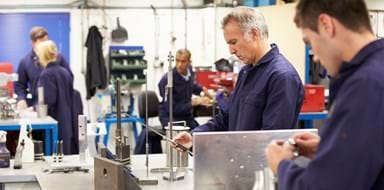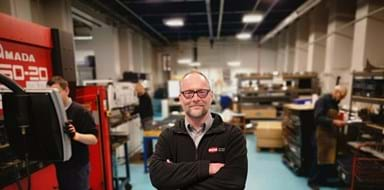
The development of a digital platform could enable manufacturers to measure and model the carbon impact of every aspect of their supply chains.
Traditionally, supply chain decisions are based on the three pillars of cost, quality and service, but if manufacturers are to meet the challenges of delivering Net Zero, they need to add another pillar: carbon footprint.
Innovation Case Study - CarbonVue“While some businesses are incorporating carbon measurements, it tends to be done for annual reports or certain aspects of production.
There’s no capability for measuring carbon in a joined-up way through a whole supply chain,” says Andy Birtwistle, CEO of supply chain technology developer SupplyVue.
SupplyVue is leading a project that aims to make carbon a central tenant of supply chain management. Using £1.5m funding from the Made Smarter Innovation Challenge, it is working with industry, technology and academic partners to develop a new digital platform, CarbonVue, that will provide visibility of carbon throughout a supply chain, enabling integrated real-time carbon and productivity management.
The project builds on SupplyVue’s technology, which builds a digital twin of a supply chain. By modelling different scenarios, businesses can identify opportunities for efficiencies and make more informed decisions about future strategies.
“With CarbonVue, we are building the capability to add carbon impact to our technology platform, enabling the measuring and modelling of each individual supply chain activity, such as the energy used by a particular machine or a lorry delivery to different destinations,” says Birtwistle. “It will generate an absolute measure of carbon per kilogramme of product –much like the calorie measure of food.”
The project is using real supply chain data from partners Tata Steel and aerospace supplier Moveero (formerly GKN), while defence company Babcock International is providing specific insights for product development from their sector and position at the top of a supply chain.
“Working with these partners means we can capture data all the way from steel coils arriving in a factory, The development of a digital platform could enable manufacturers to measure and model the carbon impact of every aspect of their supply chains CarbonVue integrated carbon and productivity end-to-end supply chain management through processing, and into finished goods,” says Birtwistle.
The team also worked with the University of Warwick to create algorithms for analysing and modelling the supply chain. “With information about what has happened in the past, we can model the impact of alterations to the supply chain. So, for example, manufacturers could see the carbon impact of running products twice as fast down a line.”
Incorporating data from the whole chain may also facilitate better collaboration between supply chain partners, says Birtwistle. “Trust – or lack of it – is a major issue in commercial relationships, particularly around sensitive information. Carbon is a measure of efficiency that could enable conversations on how to re-configure the supply chain without having to share sensitive cost information.”
At a time when customers are calling for greater transparency about environmental impact, alongside government targets, CarbonVue has the potential to put carbon management at the front and centre of decision-making in a supply chain.
“Poor supply-chain collaboration is a barrier to end-to-end efficiency, but this technology has the capability to unify supply chain partners in a common low carbon goal,” says Birtwistle. “The need for the UK’s manufacturing sector to be more productive and to reduce carbon emissions is a clear imperative but improvement is slow. CarbonVue could provide the catalyst for change.”





